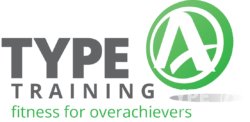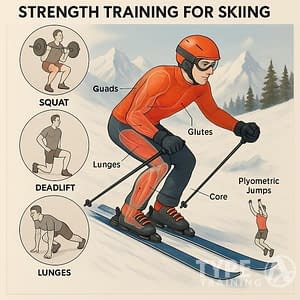Looking to add some serious weight to your squat? The Smolov Squat Program might be exactly what you need.
This legendary 13-week Russian training protocol is for intermediate to advanced lifters who want major strength gains in their back squat. If you follow it right, the Smolov program has helped plenty of lifters boost their squat by 40-100 pounds—it’s honestly one of the most effective strength programs out there.

The program isn’t for the faint of heart. Russian Master of Sports Sergey Smolov created this routine, and it’s known for brutal intensity and high volume.
Popular posts:
You’ll work through five phases: a two-week intro, a four-week base mesocycle, a two-week switching phase, a four-week intense cycle, and a one-week taper. Each phase pushes your squat strength higher, using calculated percentages of your one-rep max.
You really need to go all in with the Smolov Squat Program if you want results. That means prioritizing recovery, eating well, and probably cutting back on other training for the full 13 weeks.
A lot of lifters who finish the full Smolov cycle say it’s a game-changer. It builds not just your legs, but your mental grit too.
Key Takeaways
- The Smolov Squat Program is a 13-week Russian training protocol that can increase your squat by 40-100 pounds through systematic, high-volume training.
- You’ll progress through five distinct phases with carefully calculated percentages of your one-rep max to maximize strength development.
- Proper recovery, nutrition, and reduced training in other areas are essential for success with this intense program.
Overview of the Smolov Squat Program

The Smolov Squat Program is one of the toughest and most effective strength training protocols for boosting your squat. It combines high frequency, high volume, and carefully ramped-up intensity to spark big strength gains.
Origins and History
Russian Master of Sports Sergey Smolov created the program. He’s a well-known strength coach from Russia.
The Smolov program caught on in the West in the early 2000s, as more powerlifters and Olympic lifters tried out Russian training styles. Smolov leaned on Soviet training principles, which put a huge emphasis on volume and frequency to drive strength.
While Western programs often stick with moderate volume and intensity, Smolov’s Russian approach pushes athletes to their limits. The full program runs for 13 grueling weeks and was always meant for advanced lifters stuck at a plateau.
It’s developed a reputation for being both brutally hard and incredibly effective—a real rite of passage for committed strength athletes.
Key Principles
The Smolov squat program has a few core principles:
High Frequency Training: You’ll squat 3-4 times per week, which is way more than most programs. This constant stimulus forces your body to adapt fast.
Progressive Overload: All the weights are based on your 1 rep max, and they go up in a calculated way throughout the cycle.
Phase Structure:
- Introductory phase (optional)
- Base mesocycle (4 weeks)
- Switching phase (2 weeks)
- Intense mesocycle (4 weeks)
Specialization: Smolov focuses just on the squat, not on being a full powerlifting plan. You’ll maintain other lifts, but they’re not the priority.
Comparison to Other Squat Programs
Smolov stands out from other squat programs in a few big ways.
Volume and Intensity: Programs like 5/3/1 or Texas Method use moderate volume. Smolov, though? It’s way higher. You’ll squat more in one week than some programs have you do in two.
Recovery Demands: You need to recover like a champ to survive Smolov. Unlike beginner programs like Starting Strength, Smolov just piles on the squatting—more than most people would ever want to do.
Specificity: Smolov is all about squatting, while Westside Barbell or Conjugate Method mix in different lifts and speeds.
Results: Not many programs can match Smolov for rapid gains. Lifters often report adding 40-100 pounds to their squat after running the full cycle.
Structure and Phases of the Smolov Squat Program
The Smolov squat program splits into four phases, each with its own intensity and volume. Over 13 weeks, you’ll steadily push your squat strength higher with structured workouts.
Introductory Microcycle
The Introductory Microcycle, or Phase In, covers the first two weeks. It’s there to get your body ready for what’s coming.
You’ll squat 2-3 times a week at moderate intensity (70-80% of your 1RM). Here’s what a typical week looks like:
- Day 1: 5 sets of 7 reps at 70% 1RM
- Day 2: 6 sets of 5 reps at 75% 1RM
- Day 3: 6 sets of 3 reps at 80% 1RM
Your body needs this time to adapt to frequent squatting before you ramp up the volume.
Recovery is key here. Make sure you’re eating well, sleeping enough, and doing some mobility work between sessions.
Base Mesocycle
The Base Mesocycle is the meat of the Smolov program and runs from weeks 3-6. You’ll squat four times a week, with high volume and frequency.
Each day has its own focus:
| Day | Sets × Reps | Intensity | Rest Between Sets |
|---|---|---|---|
| Monday | 4 × 9 | 70-75% | 2-3 minutes |
| Wednesday | 5 × 7 | 75-80% | 2-3 minutes |
| Friday | 7 × 5 | 80-85% | 2-3 minutes |
| Saturday | 10 × 3 | 85-90% | 2-3 minutes |
Add 10-20 pounds (5-10 kg) to the bar each week, depending on your strength. This part is brutal—drop other lower body work if you want to survive.
You’ll probably feel wiped out at times. But this is where the big gains start.
Switching Phase
The Switching Phase bridges the Base and Intense phases (weeks 7-8). It’s a two-week breather for your body.
You’ll squat just 1-2 times a week at moderate intensity (60-70%). Focus on:
- Cleaning up your squat technique
- Doing active recovery
- Keeping your strength up
It’s a good spot to add in some speed or light technique work. This phase matters—it helps you avoid burning out before the final push.
Some folks like to test their 1RM at the end here, just to recalibrate for the last phase.
Intense Phase
The Intense Phase covers the final three weeks (weeks 9-13). Now you’re pushing for max strength with high intensity and lower volume.
Here’s the basic outline:
Week 1-2:
- Day 1: 3×3 at 85%
- Day 2: 4×2 at 90%
- Day 3: 5×1 at 95%
Week 3 (Peak):
- Day 1: 2×3 at 90%
- Day 2: 3×2 at 95%
- Day 3: 4×1 at 100%
- Day 4: Test your new 1RM
You’ll be handling near-max weights, priming yourself for a new personal best.
Most lifters see 10-15% strength jumps on their squat after finishing the whole thing.
Training Methodology and Key Components
The Smolov Squat Program takes a precise, almost ruthless approach to building strength. It’s all about progression, volume, and intensity—dialed in just right.
Progression and 1RM Calculations
Smolov relies on accurate one-rep max (1RM) numbers. Most experts say to knock 10% off your real 1RM before you start, just so you don’t flame out halfway.
You’ll calculate all your training weights off this adjusted 1RM. The percentages climb steadily as you go:
- Introductory Microcycle (Weeks 1-2): Moderate weights, just getting ready
- Base Mesocycle (Weeks 3-6): The intensity ramps up
- Switching Phase (Weeks 7-8): Pull back and recover
- Intense Mesocycle (Weeks 9-12): Big weights, peak intensity
As you move through the 13-week program, the plan keeps nudging your numbers higher, pushing your limits the whole way.
Volume and Intensity
Smolov’s reputation comes from its wild mix of volume and intensity. You’ll squat up to four times a week during some parts.
There’s a careful balance here:
- Sets and reps: Anywhere from 4×9 to 7×5 or 10×3
- Frequency: Squat, squat, squat (and then squat again)
- Percentages: Ranging from 70% up to 90%+ of your 1RM
During the Base Mesocycle, your week might look like this:
- Monday: 4 sets of 9 reps
- Wednesday: 5 sets of 7 reps
- Friday: 7 sets of 5 reps
- Saturday: 10 sets of 3 reps
This high training frequency is a massive stimulus for growth, but you need to recover well. If you don’t, the wheels come off fast.
Accessory Work
The Smolov program keeps accessory exercises to a minimum so you can focus recovery on the main lift.
You should cut back on extra lower body work while running this program.
Your accessory work should stick to:
- Mobility exercises for joint health
- Light upper body training to keep some overall strength
- Recovery techniques like foam rolling, stretching, or massage
Don’t pile on extra exercises beyond what’s written in the plan.
This program is brutal, and recovery is always at a premium.
Honestly, some people say even walking feels tough during the hardest weeks.
If you really feel like you need more, keep it light and simple:
- Technique drills
- Upper body maintenance
- Core stabilization
Surviving the brutality of Smolov means putting almost all your recovery into squatting well.
Supporting Factors for Maximizing Strength Gains
The Smolov program pushes your body to its limits.
Recovery and nutrition aren’t optional here—they’re the difference between making it or burning out.
Recovery and Sleep
Your body actually gets stronger when you rest, not when you’re grinding out reps.
On the Smolov squat program, recovery matters even more since you’ll squat up to four times a week.
Shoot for 8-9 hours of solid sleep every night.
Sleep is when your muscles repair and grow.
If you slack on sleep, you’ll see less progress and your chance of injury shoots up.
Try these recovery tricks between sessions:
- Cold/hot contrast showers
- Light mobility work on off days
- Foam rolling tight spots for 5-10 minutes
- Epsom salt baths for muscle relaxation
Skip any extra lower body training during Smolov.
Your legs need every bit of recovery they can get.
Eating and Nutrition
You’ll need to eat more on Smolov.
Most lifters add 300-500 calories a day to keep up.
Protein needs go up too. Aim for 1.8-2.2g per kg of bodyweight each day.
If you skimp on protein, your strength gains may be limited.
Pay attention to when you eat:
- Get 20-40g protein within 30 minutes after you train
- Add some fast carbs post-workout to refill glycogen
- Eat a balanced meal 2-3 hours before heavy sessions
Hydration can’t be ignored—try for at least 3-4 liters of water daily.
Even a little dehydration, like 2%, can drop your strength by up to 10%.
Variations and Related Programs
The Smolov squat program has spawned a bunch of variations for different goals and lifts.
These tweaks keep the main ideas but adjust volume and intensity for specific needs.
Smolov Jr
Smolov Jr is a shorter, 3-week spin on the original.
If you need a quick strength bump, it’s a solid pick.
It runs four days a week, but the volume is way more manageable.
Here’s the basic setup:
- Week 1-3: 4 sessions per week
- Sets x Reps: Rotates from 6×6, 7×5, 8×4, to 10×3
- Intensity: 70-85% of your 1RM
Smolov Jr works great as a peaking cycle before a meet or if you’re pressed for time.
Plenty of lifters use it during deloads or when they hit a plateau.
It’s less taxing than the full Smolov, so intermediate lifters can handle it.
You can even run Smolov Jr multiple times, just take short breaks between cycles.
Sheiko and Alternative Programs
Sheiko programs offer a more sustainable path.
Boris Sheiko built them around technique and submaximal weights, with frequent practice.
Here’s how Sheiko differs from Smolov:
- Lower intensity (usually under 85% of 1RM)
- More frequent, but easier, sessions
- More exercise variety
- Longer span (12-20 weeks)
Other options like the Texas Method and 5/3/1 give you a more balanced approach.
They use progressive overload, but don’t force you into the specialization Smolov demands.
A lot of coaches suggest these alternatives for steady, long-term progress.
They’re easier on your body and help you avoid burnout or injury.
Application for Other Lifts
While originally designed for squats, people have adapted the Smolov methodology for other compound lifts. The bench press is the most common experiment, and lifters often report 15-30 pound increases after a single cycle.
If you’re trying it for bench:
- Drop your weights by 5-10% compared to squat percentages.
- Add more upper body accessory work.
- Keep a close eye on shoulder health—seriously, don’t skip this.
The deadlift adaptation is a whole different beast. Recovery demands shoot up, and not everyone handles it well.
If you want to give it a shot:
- Cut the volume by 20-30%.
- Focus more on negatives.
- Take longer rest periods between sessions, even if it feels like you’re slacking.
Most coaches pretty much say, “Don’t run Smolov for multiple lifts at the same time.” The recovery toll is brutal. Just pick one lift to push hard, and keep the others ticking over with the bare minimum.










